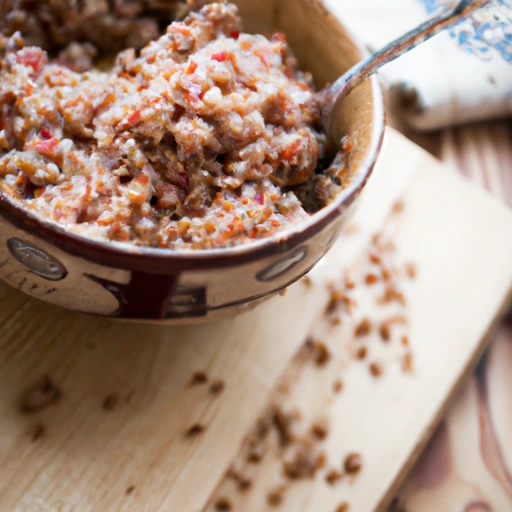Kasha
Description

Kasha is a traditional Eastern European dish made from whole grains such as buckwheat, which is known for its earthy flavor and nutritional benefits. Despite being commonly associated with buckwheat, the term 'kasha' can refer to any porridge-like dish made from various whole grains, including millet, barley, and oats. This wholesome ingredient is versatile and can be used in a variety of culinary applications, ranging from breakfast porridges to hearty side dishes.
Common uses
Kasha is widely used as a filling for knishes and blintzes, as a side dish mixed with onions and mushrooms, or simply enjoyed as a warm, comforting bowl of porridge. It is also commonly found as a key ingredient in kasha varnishkes, a Jewish dish that combines kasha with bowtie pasta.
Nutritional value
Calories
A 1/4 cup serving (approximately 45 grams) of uncooked buckwheat kasha contains around 150-155 calories.
Protein
Kasha is a good source of protein, with the same serving size offering about 5-6 grams.
Fat
It contains approximately 1-2 grams of fat, most of which are heart-healthy unsaturated fats.
Carbohydrates
The carbohydrate content in a 1/4 cup serving of uncooked kasha is around 30-33 grams, with a significant amount of fiber.
Vitamins
Kasha is an excellent source of B vitamins, particularly niacin, riboflavin, and folate.
Minerals
Rich in minerals, kasha provides magnesium, phosphorus, iron, zinc, and manganese.
Health benefits
As a rich source of fiber and essential nutrients, kasha contributes to digestive health, supports cardiovascular function, and is linked to a lower risk of developing chronic diseases. Its high protein content makes it a favorite among vegetarians and vegans looking for plant-based protein sources.
Potential risks
For individuals with grain sensitivities or celiac disease, it's crucial to note that while buckwheat is naturally gluten-free, cross-contamination with gluten-containing grains can occur during processing. Always check for certified gluten-free labels if necessary.
Common recipes
Kasha is commonly used in recipes such as kasha varnishkes, salads, pilafs, and as a stuffing for vegetables and meats.
Cooking methods
It can be boiled, toasted, simmered, or used as a flour for baking. To enhance its nutty flavor, kasha is often toasted in a dry skillet before cooking in water or broth.
Pairing with other ingredients
Kasha pairs well with onions, mushrooms, garlic, and herbs. It can also complement sweet flavors such as honey or fruit in breakfast dishes.
Summary
Kasha is a nutritious, versatile whole grain that has been a dietary staple in Eastern European cuisine for generations. It's packed with protein, fiber, vitamins, and minerals, and can be prepared in a multitude of ways to suit any meal. While it's a healthful addition to many diets, those with grain sensitivities should be cautious of potential gluten contamination.